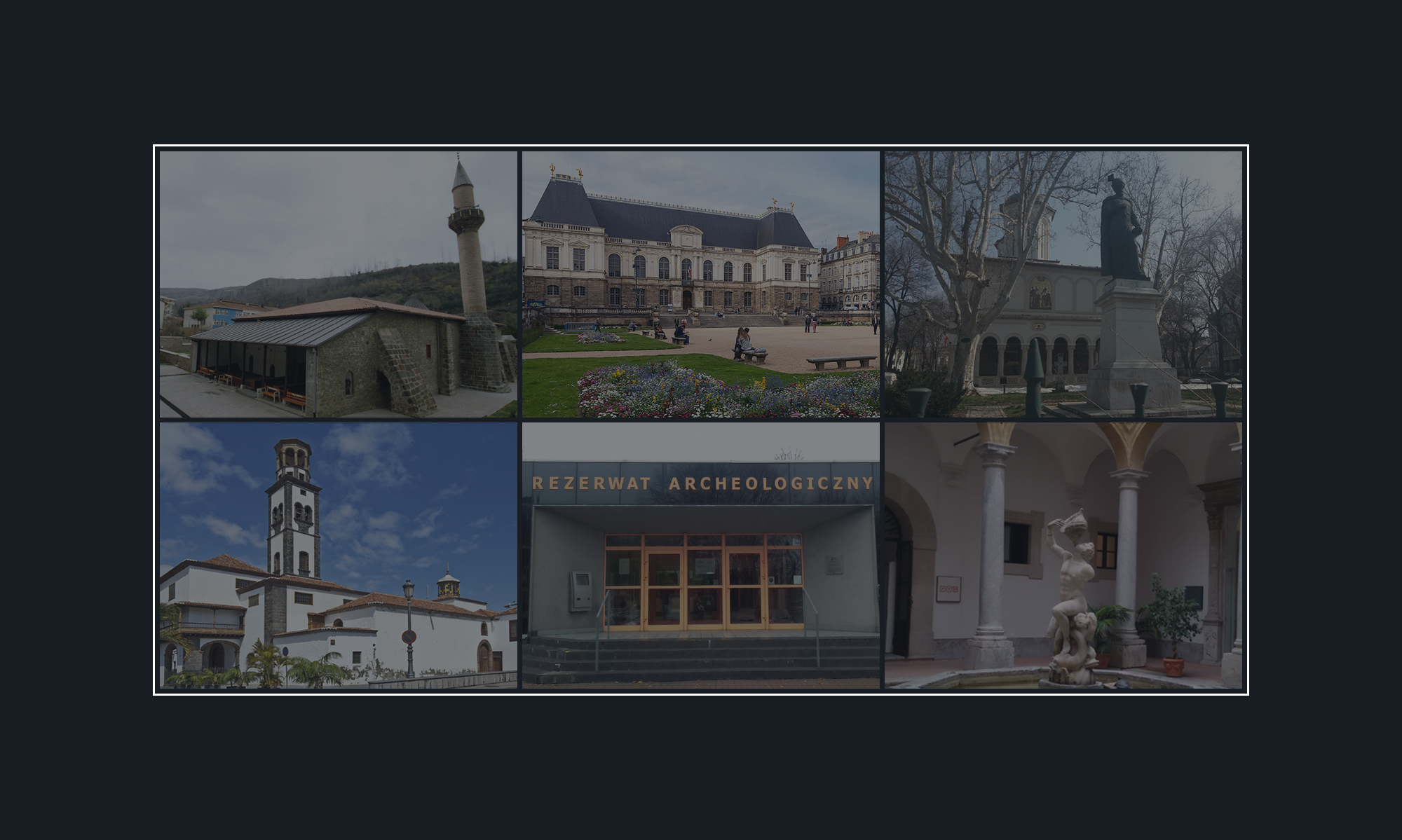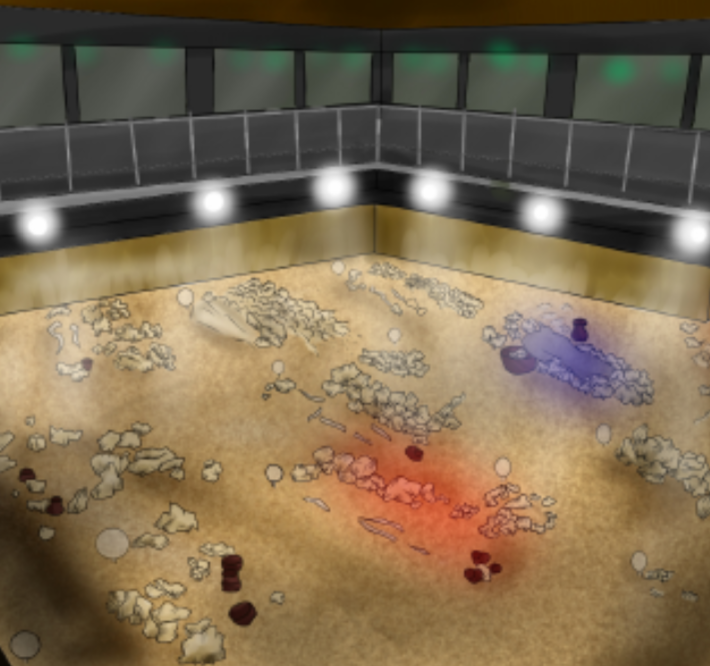Musée de Częstochowa
CD CODES
TSK Type de Fiche A
RV RELATIONS
RSE Relation Directes®
RSER Relation type Réserve archéologique – cimetière de la culture lusacienne
OG OBJET
OGT OBJET
OGTD Définition Typologique Musée
OGTQ Qualification Exposition Archéologique «in situ» – en lieu de la découverte
OGTN Dénomination Musée de Czestochowa. Réserve Archéologique
LC LOCALISATION-GÉOGRAPHIQUE-ADMINISTRATIVE
PVC LOCALISATION GÉOGRAPHIQUE-ADMINISTRATIVE ACTUELLE
PVCS Pays Pologne
PVCL Localité Częstochowa
PVCI Adresse Łukasińskiego 20
AU DÉFINITION CULTURELLE
AUT AUTEUR®
AUTR Référence à l’intervention Construction en dalles de beton
AUTN Auteur Włodzimierz Ściegienny
AUTA Données personnelles/période d’activité Né en 1921, mort en 1990
ATB DOMAINE CULTUREL®
ATBR Référence à l’intervention Cimetière de la culture lusacienne
ATBD Dénomination Culture lusacienne
ATBM Source d’attribution Analyse historique du cimetière
RE INFORMATIONS HISTORIQUES®
REN INFORMATION®
RENR Référence Autour
RENS Information synthétique Découverte du cimetière
RENN Information La grande partie du cimetière a été découverte pendant les travaux liés à la construction du viaduc en 1955
REL CRONOLOGIE, DEBUT DE PÉRIODE
RELS Siècle XXe
RELI Date 1955
REV CHRONOLOGIE, FIN DE PÉRIODE
REVS Siècle XXe
REVI Date 1955
REN INFORMATION®
RENR Référence Ensemble du bien
RENS Information synthétique Fondation de la réserve
RENN Information La Réserve a été fondé de l’initiative de l’archéologue Włodzimierz Błaszczyk en 1965
REL CRONOLOGIE, DEBUT DE PÉRIODE
RELS Siècle XXe
RELI Date 1965
REV CHRONOLOGIE, FIN DE PÉRIODE
REVS Siècle XXe
REVI Date 1965
PN PLAN®
PNT PLAN
PNTF Forme En forme de croix
CP COUVERTURE
CPU Localisation Ensemble du bien
CPF CONFIGURATION EXTÉRIEUR
CPFG Genre Toit
CPFF Forme rectangulaire
PV SOLS ET REVÉTEMENTS DU SOL
PVM SOL ET PAVAGE®
PVMU Localisation Espace central
PVMS Schema du dessin® Au moment de la découverte les tombes ont été couvertes de pavages en pierre de calcium et granite
CO CONSERVATION
STC ÉTAT DE CONSERVATION
STCC État de conservation Bon
STCO Indications spécifiques Bon état d’entretient
US UTILISATION
USA UTILISATION ACTUELLE®
USAR Référence à la partie Patrimoine entière
USAD Utilisation actuelle Réserve archéologique. Une partie est destinée à l’exposition, l’autre à la salle didactique
USO UTILISATION HISTORIQUE®
USOR Référence à la partie Espace central
USOC Référence temporelle VIIIème – VIème siècle avant JC
USOD Utilisation® Cimetière de la culture lusacienne
TU STATUT JURIDIQUE ET RESTRICTIONS
CDG STATUT JURIDIQUE
CDGG Information générique Propriété de l’Institution Publique
CDGS Information spécifique® Musée de Czestochowa, Réserve Archéologique
DO SOURCES ET DOCUMENTS DE RÉFÉRENCE
FTA DOCUMENTATION PHOTOGRAPHIQUE®
FTAP Genre Photo numériques
FTAD Date Octobre 2017
ADM AUTRE DOCUMENTATION®
ADMP Type Dessin graphique
ADMA Auteur Beata Kołodziejczyk
ADM AUTRE DOCUMENTATION®
ADMP Type Fichiers numériques
ADMA Auteur AgnieszkaSłomian, Julia Sidyk
ADMD Date Octobre 2017
ADM AUTRE DOCUMENTATION®
ADMP Type http://www.rezerwat.muzeumczestochowa.pl/ Document jpg
ADMA Auteur Beata Kołodziejczyk
ADMD Date 12.12.2018
BIB BIBLIOGRAPHIE®
BIBX Genre Bibliographie spécifique
BIBA Auteur Élaboration collective sous la rédaction de Włodzimierz Błaszczyk
BIBD Année d’édition 1965
BIL Citation complète® Annuel du Cimétière de la culture Lusacienne
CM REMPLISSAGE
CMP REMPLISSAGE
RSR Référent scientifique® Mme Gerta Bielińska
AN NOTES
OSS Observations Bâtiment construit en dalles de béton, en forme de mastaba sans valeur historique. Il a été construit pour préserver la decouverte archéologique in situ de la culture lusacienne.
Le cimetière du peuple de culture lusacienne du début de l’époque du fer (la période Halstatt C 750-550 ans avant J.C) à Częstochowa-Raków au rite mixte de l’enterrement à l’inhumation et à l’incinération a été alors situé sur la dune de sable à côté d’un ruisseau qui n’existe plus aujourd’hui. Il est difficile de déterminer précisément les dimensions du cimetière parce que sa grande partie a été détruite pendant les travaux liés à la construction du viaduc et le reste se trouve sous son remblai. Jusqu’à présent, on a découvert 85 tombes dont 44 à l’inhumation et 25 à l’incinération. Le reste des tombes ne sont pas déterminées à cause du mauvais état.
CD CODES
TSK Type of Card A
RV RELATIONS
RSE Direct Relations®
RSER Relation type Archaeological Reserve- Cemetery of Lusatian Culture
OG OBJECT
OGT OBJECT
OGTD Definition Museum
OGTQ Typology Archeological – In situ exhibition – in place of discovery
OGTN Denomination Czestochowa Museum, Archaeological Reserve
LC GEOGRAPHIC – ADMINISTRATIVE LOCATION
PVC CURRENT GEOGRAPHIC ADMINISTRATIVE LOCATION
PVCS Country Poland
PVCL Town Częstochowa
PVCI Address Łukasińskiego 20
AU CULTURAL DEFINITION
AUT AUTHOR®
AUTR Reference to the intervention Construction. Built of concrete slabs.
AUTN Author Wlodzimierz Sciegienny
AUTA Personal information/working period Born in1921, died in 1990
ATB CULTURAL FIELD®
ATBR Reference to the intervention Cemetery of lusatian culture
ATBD Denomination Lusatian culture
ATBM Source of the attribution Historical analysis of the cemetery
RE HISTORICAL INFORMATION®
REN INFORMATION®
RENR Reference Around
RENS Synthetic information Discovery of the Cemetery
RENN Information Much of the Lusatian Culture Cemetery was discovered during the construction of the viaduct in 1955
REL CHRONOLOGY, BEGINNING OF THE PERIOD
RELS Fraction of century XX
RELI Date 1955
REV CHRONOLOGIE, END OF THE PERIOD
REVS Century XX
REVI Date 1955
REN INFORMATION®
RENR Reference Entire héritage
RENS Synthetic information Foundation of the reserve
RENN Information Reserve was created from the initiative of Włodzimierz Błaszczyk in 1965
REL CHRONOLOGY, BEGINNING OF THE PERIOD
RELS Fraction of century XX
RELI Date 1965
REV CHRONOLOGIE, END OF THE PERIOD
REVS Century XX
REVI Date 1965
PN PLAN®
PNT PLAN
PNTF Form Cross shaped
CP ROOFING
CPU Location Entire Heritage
CPF OUTSIDE CONFIGURATION
CPFG Kind Roof
CPFF Form Rectangular
PV GROUNDS AND PAVING
PVM GROUND AND PAVING®
PVMU Location The Entire Heritage
PVMS Pattern code® At the time of the discovery the tombs were covered with stone pavements of calcium and granite.
CO PRESERVATION
STC PRESERVATION STATUS
STCC Preservation status Good
STCO Specific information Good state of maintenance
US USES
USA CURRENT USE®
USAR Reference to the part Entire Heritage
USAD Use Archaeological Reserve. One part is for the exhibition, the other part for the didactic room.
USO HISTORICAL USE®
USOR Reference to the part Central area
USOC Time reference VIII to VI age before Christ
USOD Use® Cemetery of Lusatian culture
TU JURIDICAL STATUS AND RESTRICTIONS
CDG JURIDICAL STATUS
CDGG Generic information Property of Public Institution.
CDGS Specific information Museum of Częstochowa, Archaeological Reserve
DO SOURCES AND BACKGROUND MATERIAL
FTA PHOTOGRAPHICAL DOCUMENTS®
FTAP Type Colour photos
FTAD Date October 2017
ADM OTHER DOCUMENTATION®
ADMP Type Graphic drawing
ADMA Author Beata Kołodziejczyk
ADM OTHER DOCUMENTATION®
ADMP Type Digital files
ADMA Author Agnieszka Słomian, Julia Sidyk
ADMD Date October 2017
ADM OTHER DOCUMENTATION®
ADMP Type http://www.rezerwat.muzeumczestochowa.pl/ Jpg Document
ADMA Author Beata Kołodziejczyk
ADMD Date 12.12.2018
BIB BIBLIOGRAPHY®
BIBX Genre Specific bibliography
BIBA Author Collective work edited by Włodzimierz Błaszczyk
BIBD Edition year 1965
BIL Complete quote® Annual Cimetiere of Lusatian Culture
CM DRAWING UP
CMP DRAWING UP
RSR Scientific contact® Ms Gerta Bielińska
AN NOTES
OSS Observations Building constructed in the form of mastaba without historical value.
It he buiding was bulit to construct the fruction of the archeaological reserve “in situ” of the Lusatian culture. Cemetery of the Lusatian Culture population of the early Iron Age (Hallstatt C period, approximately 750-550 BC) in Częstochowa-Raków, was once located on a sand dune next to stream, which no longer exists. To date, 85 burials have been discovered, 44 of which are the skeletal and 25 of crematory nature. The remaining graves are unidentified due to poor state of preservation.
Skeletal graves were established along the north-south axis. The dead were buried in upright position with their heads facing south.
In most cases, crematory burials imitate skeletal graves with the outline and orientation of the burial pit, the layout of bones and equipments.


